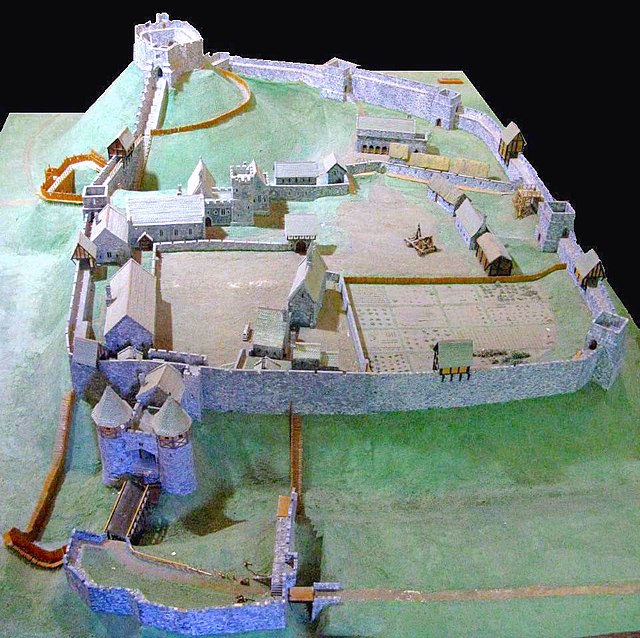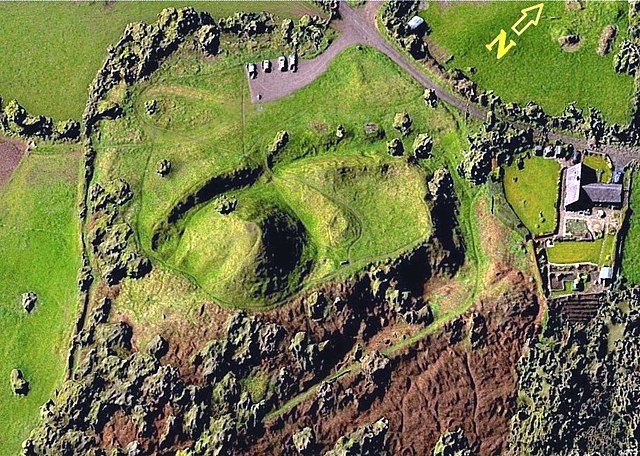Carisbrooke Castle is a historic motte-and-bailey castle located in the village of Carisbrooke, Isle of Wight, England. Charles I was imprisoned at the castle in the months prior to his trial.
The interior of Carisbrooke Castle
A reconstruction of Carisbrooke Castle during the 14th century
The bowling green used by Charles I during his imprisonment
The gatehouse entrance to the castle
A motte-and-bailey castle is a European fortification with a wooden or stone keep situated on a raised area of ground called a motte, accompanied by a walled courtyard, or bailey, surrounded by a protective ditch and palisade. Relatively easy to build with unskilled labour, but still militarily formidable, these castles were built across northern Europe from the 10th century onwards, spreading from Normandy and Anjou in France, into the Holy Roman Empire, as well as the Low Countries it controlled, in the 11th century, when these castles were popularized in the area that became the Netherlands. The Normans introduced the design into England and Wales. Motte-and-bailey castles were adopted in Scotland, Ireland, and Denmark in the 12th and 13th centuries. By the end of the 13th century, the design was largely superseded by alternative forms of fortification, but the earthworks remain a prominent feature in many countries.

A reconstruction of the English city of York in the 15th century, showing the motte-and-bailey fortifications of Old Baile (left foreground) and York Castle topped by Clifford's Tower (centre right)
Plan of Topcliffe Castle in North Yorkshire, an archetypal motte-and-bailey design
Castle Pulverbatch in Shropshire in England was built in the 11th or 12th century and abandoned by 1202. This digital elevation model shows the motte just left of centre, with the bailey to the right (north-east) of it.
The motte and bailey defences of Launceston Castle in England








